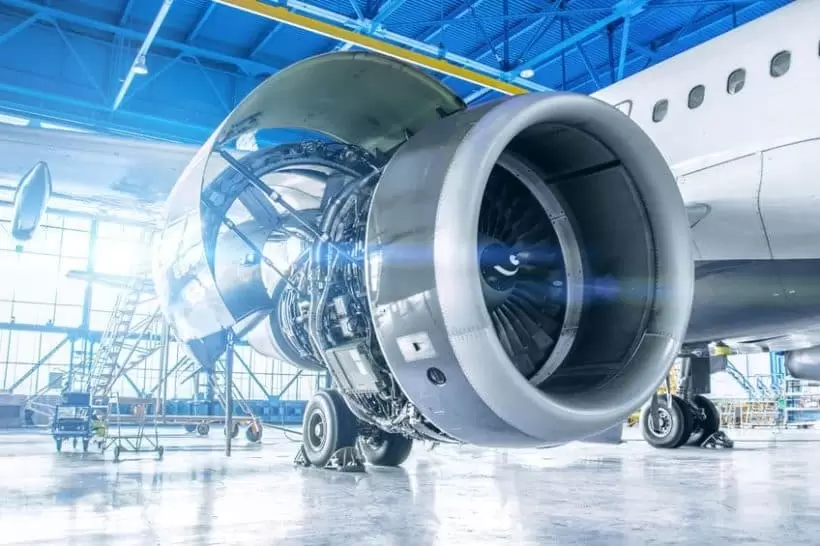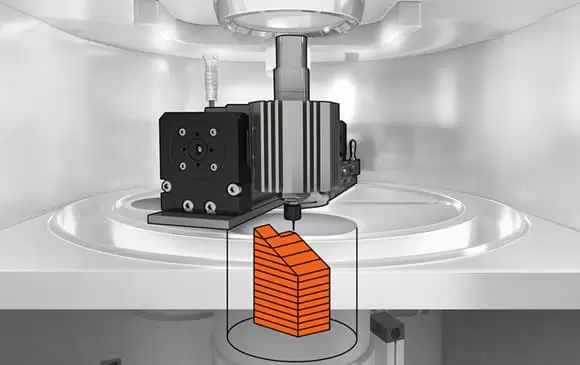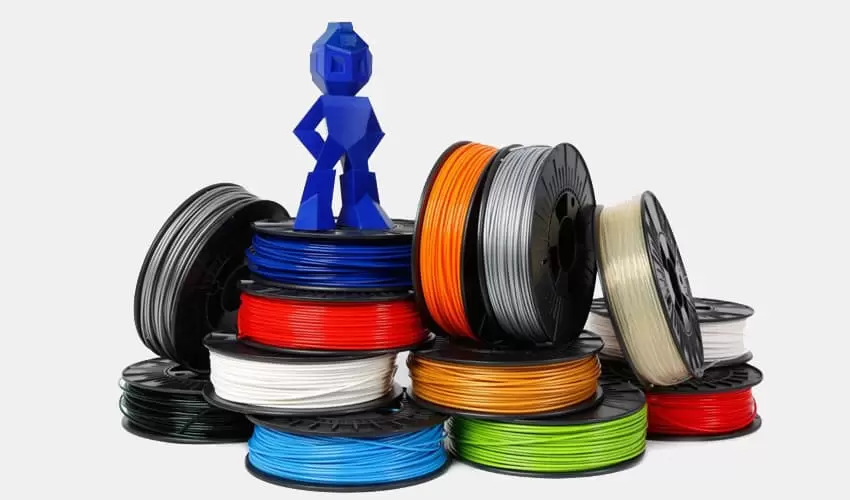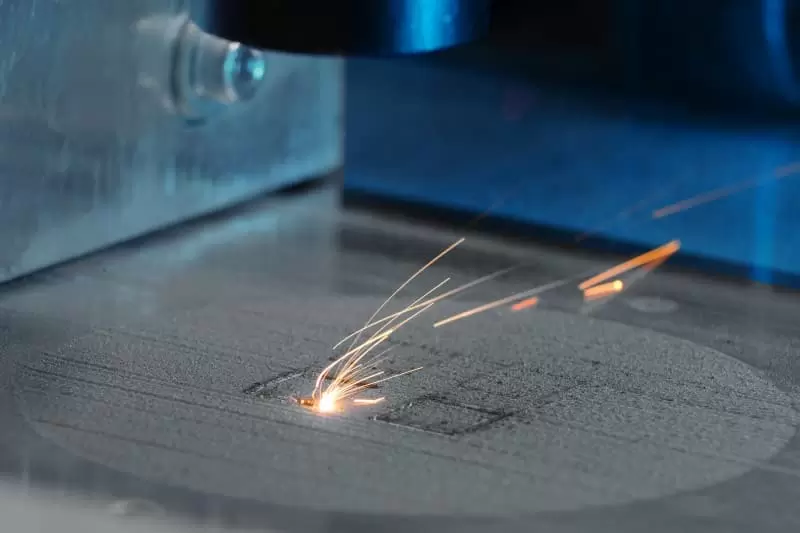we delve into the nuances of industrial grade and desktop grade 3D printing, exploring their differences, advantages, and applications. Whether you're a professional in the industry or just starting out, this guide will help you make an informed decision on which type of 3D printing is best suited for your needs. Discover how industrial grade 3D printing can offer superior performance, durability, and cost-effectiveness compared to desktop grade, and how it can revolutionize various industries.
I. Introduction
What is Industrial Grade 3D Printing?
Industrial grade 3D printing refers to the use of advanced and sophisticated systems that can produce high-quality parts and products with complex geometries, intricate details, and functional properties. These systems are designed for heavy-duty applications that require high performance, reliability, and durability. Industrial grade 3D printers typically use technologies such as selective laser sintering (SLS), direct metal laser sintering (DMLS), stereolithography (SLA), or fused deposition modeling (FDM) with engineering-grade materials. Industrial grade 3D printing is often used for prototyping, tooling, manufacturing, or research and development purposes.
What is Desktop Grade 3D Printing?
Desktop grade 3D printing refers to the use of affordable and accessible systems that can produce parts and products with moderate quality and functionality. These systems are suitable for small-scale and hobbyist applications that do not require high precision, strength, or durability. Desktop grade 3D printers usually use technologies such as FDM or SLA with consumer-grade materials. Desktop grade 3D printing is often used for education, entertainment, art, or personal projects.
Why Does It Matter?
Choosing the right type of 3D printing for your application is essential for achieving the desired results. Depending on your goals, budget, timeline, and specifications, you may opt for either industrial grade or desktop grade 3D printing. However, you should be aware of the trade-offs involved in each option. For instance, industrial grade 3D printing offers superior quality and performance, but it also comes with higher costs, longer lead times, and more complex operations. On the other hand, desktop grade 3D printing offers lower costs, faster turnaround times, and easier accessibility, but it also compromises on quality and functionality. Therefore, you should carefully weigh the benefits and drawbacks of each option before making a decision.
What Will You Learn?
In this guide, we will dive deeper into the differences between industrial grade and desktop grade 3D printing in terms of:
- Materials: What types of materials are available for each option? How do they affect the properties and performance of your parts and products?
- Capabilities: What are the strengths and limitations of each option? How do they influence the design and functionality of your parts and products?
- Applications: What are some examples of projects that are best suited for each option? How can you leverage the advantages of each option for your specific needs?
II. Differences Between Industrial Grade and Desktop Grade 3D Printing
A. Material Compatibility and Quality
- Compatibility with Industrial Materials
Industrial grade 3D printing is engineered to handle a diverse range of industrial materials, including high-performance plastics, metals, and composite materials. This part delves into the compatibility of industrial grade printers with these advanced materials, enabling the production of robust and high-quality components for demanding applications.
- Quality of Industrial Grade Materials
The quality of materials used in industrial grade 3D printing is a paramount consideration. From aerospace to automotive applications, this segment explores how industrial grade materials surpass standard desktop options in terms of strength, heat resistance, and overall durability. The discussion sheds light on the superior material properties that contribute to the reliability of printed parts.
B. Performance and Speed
- Processing Time and Efficiency
Industrial grade 3D printers are renowned for their efficiency in processing time, making them ideal for large-scale production. This section delves into the advanced technologies and mechanisms that contribute to the swift processing of intricate designs, ensuring a streamlined workflow in industrial settings.
- Speed of Production
Speed is a key differentiator between industrial and desktop grade 3D printing. Here, we explore how industrial grade printers, equipped with cutting-edge features, can rapidly produce complex components, meeting the demands of industries where time is a critical factor.
C. Durability and Longevity
- Resistance to Environmental Factors
Industrial grade 3D printing goes beyond mere functionality; it ensures durability even in challenging environmental conditions. This part examines how these printers and materials exhibit resistance to factors such as extreme temperatures, chemicals, and UV exposure—qualities vital for applications in harsh industrial environments.
- Lifespan of Printed Parts
The durability of printed parts is a crucial aspect of the comparison. Industrial grade 3D printing excels in producing components with extended lifespans, contributing to reduced maintenance requirements and increased reliability. This section explores the factors that contribute to the long-term durability of parts manufactured through industrial grade technologies.
D. Cost-Effectiveness
- Cost of Industrial Grade Materials
While industrial grade 3D printing offers unmatched quality, it comes at a higher initial cost. This part discusses the investment required for industrial grade materials and printers, emphasizing the long-term cost-effectiveness through enhanced performance, reliability, and reduced maintenance.
- Cost-Effectiveness in Terms of Volume and Complexity
Industrial grade 3D printing proves its cost-effectiveness when dealing with high volumes and complex designs. Examining the economies of scale and the efficiency gained in producing intricate components, this segment provides a nuanced understanding of how industrial grade technology can justify its initial investment over time.
III. Advantages of Industrial Grade 3D Printing
Industrial grade 3D printing is a technology that has revolutionized the way industries create and use physical objects. From aerospace to healthcare, industrial grade 3D printing offers a range of advantages that make it the ideal solution for various applications. In this blog post, we will explore four of these advantages and how they benefit different industries.
A. Suitable for Heavy-Duty Applications
One of the main advantages of industrial grade 3D printing is its suitability for heavy-duty applications. Industrial grade printers use high-performance materials such as metals, ceramics, and composites, which have superior strength and durability compared to conventional plastics. These materials can withstand high temperatures, pressures, and stresses, making them ideal for producing critical components that require high reliability and performance.
Some of the industries that benefit from this advantage are:
- Aerospace: Industrial grade 3D printing enables the production of complex and lightweight parts such as engine components, turbine blades, and rocket nozzles, which improve fuel efficiency and reduce emissions.
- Automotive: Industrial grade 3D printing allows the creation of customized and optimized parts such as gears, pistons, and chassis, which enhance vehicle performance and safety.
- Healthcare: Industrial grade 3D printing facilitates the fabrication of biocompatible and personalized implants, prosthetics, and surgical tools, which improve patient outcomes and quality of life.
B. Higher Precision and Accuracy
Another advantage of industrial grade 3D printing is its higher precision and accuracy. Industrial grade printers have advanced features such as laser scanners, sensors, and feedback systems, which ensure that the printed parts match the digital models with minimal errors and deviations. Additionally, industrial grade printers can produce intricate details and precise geometries that are difficult or impossible to achieve with traditional methods.
Some of the industries that benefit from this advantage are:
- Engineering: Industrial grade 3D printing enables the design and production of complex and functional parts such as valves, pumps, and sensors, which meet the stringent requirements of engineering and manufacturing standards.
- Architecture: Industrial grade 3D printing allows the creation of detailed and realistic models of buildings, structures, and landscapes, which facilitate design visualization and communication.
- Jewelry: Industrial grade 3D printing facilitates the crafting of fine and delicate pieces of jewelry such as rings, earrings, and necklaces, which showcase exquisite craftsmanship and quality.
C. Longer Lifespan and Reduced Maintenance Requirements
A third advantage of industrial grade 3D printing is its longer lifespan and reduced maintenance requirements. Industrially printed components exhibit an extended lifespan due to their superior material properties and quality. This reduces the need for frequent replacements and maintenance, which lowers the overall maintenance costs. Furthermore, industrial grade 3D printing enables the creation of parts with fewer joints and seams, which minimizes the risk of failure and leakage.
Some of the industries that benefit from this advantage are:
- Energy: Industrial grade 3D printing enables the production of durable and efficient parts such as wind turbine blades, solar panels, and batteries, which reduce energy consumption and environmental impact.
- Transportation: Industrial grade 3D printing allows the fabrication of robust and reliable parts such as train wheels, ship propellers, and airplane wings, which improve travel safety and comfort.
- Defense: Industrial grade 3D printing facilitates the development of resilient and secure parts such as armor plates, helmets, and weapons, which enhance military capabilities and protection.
D. Scalability and Adaptability for Large-Scale Production
A fourth advantage of industrial grade 3D printing is its scalability and adaptability for large-scale production. Industrial grade printers can effortlessly scale up to meet the demands of industries requiring high-volume output. They can print multiple parts simultaneously or in batches, reducing production time and increasing productivity. Moreover, industrial grade printers can easily adapt to changing production needs by switching materials or modifying designs without requiring additional tools or equipment.
Some of the industries that benefit from this advantage are:
- Consumer Goods: Industrial grade 3D printing enables the mass production of customized and innovative products such as toys, shoes, and furniture, which cater to diverse consumer preferences and needs.
- Education: Industrial grade 3D printing allows the creation of educational materials such as models, diagrams, and puzzles, which enhance learning outcomes and engagement.
- Art: Industrial grade 3D printing facilitates the expression of artistic creativity through the creation of sculptures, paintings, and installations, which showcase originality and beauty.
Industrial grade 3D printing is a technology that offers a range of advantages for various industries. It is suitable for heavy-duty applications; it delivers higher precision and accuracy; it has a longer lifespan and reduced maintenance requirements; it is scalable and adaptable for large-scale production. These advantages make industrial grade 3D printing a valuable tool for enhancing industry performance and innovation.
IV. Advantages of Desktop Grade 3D Printing
A. Suitable for Small-Scale and Hobbyist Applications
Desktop grade 3D printing caters to a different niche, providing a user-friendly and accessible solution for small-scale and hobbyist applications. This part explores the versatility of desktop grade printers, making them ideal for individuals and enthusiasts looking to bring their creative ideas to life.
B. Lower Cost and Faster Turnaround Times
Cost-effectiveness is a notable advantage of desktop grade 3D printing. This segment discusses how the lower initial investment and operational costs make desktop grade printers an attractive option for those with budget constraints. Additionally, the faster turnaround times in small-scale projects contribute to increased efficiency.
C. Simpler to Set Up and Operate
Ease of use is a hallmark of desktop grade 3D printing. This part explores how these printers boast user-friendly interfaces and simplified setup procedures, making them accessible to individuals without extensive technical expertise. The straightforward operation ensures a smooth printing experience for hobbyists and small businesses.
D. Limited Material Options and Quality Control
While desktop grade 3D printing offers affordability and accessibility, it comes with limitations in material options and quality control. This section discusses the trade-offs involved, emphasizing the importance of understanding these constraints when choosing desktop grade technology for specific applications.
V. Applications of Industrial Grade 3D Printing
A. Manufacturing Complex Parts and Assemblies
The ability to produce intricate and durable components makes industrial grade 3D printing indispensable in the manufacturing sector. This segment explores how industries leverage the advanced capabilities of industrial grade printers to manufacture complex parts and assemblies with precision and reliability.
B. Customization and Personalization of Products
In industries where customization is paramount, industrial grade 3D printing excels. This part discusses how these printers enable the production of customized and personalized products, ranging from medical implants to automotive components, meeting the unique needs of diverse applications.
C. Repair and Maintenance of Machinery and Equipment
The robustness of components produced through industrial grade 3D printing makes them ideal for repair and maintenance applications. From replacing worn-out parts to crafting specialized components, this section explores how industries utilize the repair capabilities of industrial grade printers to enhance equipment longevity.
D. Additive Manufacturing for Rapid Prototyping and Testing
Rapid prototyping is a critical phase in product development, and industrial grade 3D printing is at the forefront of this
process. Examining how these printers facilitate rapid iteration and testing, this segment highlights the role of industrial grade technology in accelerating product development cycles.
VI. Applications of Desktop Grade 3D Printing
A. Personal Use and Creative Projects
Desktop grade 3D printing empowers individuals to unleash their creativity on a personal scale. This part explores how hobbyists and enthusiasts use desktop grade printers for artistic endeavors, creating personalized items and prototypes in the comfort of their homes.
B. Education and Training in 3D Printing
Accessibility and simplicity make desktop grade 3D printing an ideal tool for educational purposes. This section delves into how schools, colleges, and training programs leverage desktop grade printers to introduce students to the principles of 3D printing, fostering innovation and skill development.
C. Home and Office Decor and Gift-Giving
Desktop grade 3D printing extends its reach to home and office spaces. Exploring how individuals use these printers for crafting unique decor items and personalized gifts, this segment highlights the creative possibilities that desktop grade technology brings to everyday life.
D. Small-Scale Manufacturing for Individual Consumers
Entrepreneurs and small businesses find desktop grade 3D printing beneficial for small-scale manufacturing. This part discusses how individuals can set up micro-manufacturing operations using desktop grade printers, catering to niche markets and producing limited quantities of specialized products.
VII. Practical Tips and Best Practices
A. Selecting the Right Material for Your Application
The choice of material is a crucial aspect in both industrial and desktop grade 3D printing. This section provides practical insights into selecting the right material based on the specific requirements of your application, ensuring optimal performance and durability.
B. Optimizing Print Settings for Optimal Performance
Optimizing print settings is vital for achieving the desired results. Whether using an industrial or desktop grade printer, this part offers practical tips on adjusting print settings for optimal performance, including layer height, print speed, and support structures.
C. Maintaining and Repairing Your 3D Printer
Maintaining and repairing your 3D printer is essential for its longevity and consistent performance. This segment provides valuable tips on routine maintenance tasks, troubleshooting common issues, and addressing potential problems to ensure your printer operates smoothly.
D. Considering Environmental Impact and Sustainability
In an era of increasing environmental awareness, considering the ecological footprint of 3D printing is essential. This part explores sustainable practices, such as material recycling and responsible disposal, contributing to environmentally conscious 3D printing.
VIII. Conclusion
A. Recap of Key Findings and Takeaways from the Guide
As we conclude this in-depth guide, a recap of key findings and takeaways reinforces the fundamental distinctions between industrial grade and desktop grade 3D printing. From material considerations to performance capabilities, readers gain a comprehensive understanding of the factors influencing the choice between these two technologies.
B. Final Thoughts on the Choice Between Industrial Grade and Desktop Grade 3D Printing
The choice between industrial and desktop grade 3D printing ultimately hinges on the specific needs of the application. This section offers final reflections on the advantages and trade-offs associated with each technology, guiding readers towards an informed decision based on their unique project requirements.
C. Encouragement for Further Exploration and Experimentation in the Field of 3D Printing
The world of 3D printing is ever-evolving, with continuous advancements and innovations. Concluding with a call to further exploration and experimentation, this segment encourages readers to stay abreast of emerging technologies, push the boundaries of creativity, and contribute to the ongoing evolution of 3D printing.




